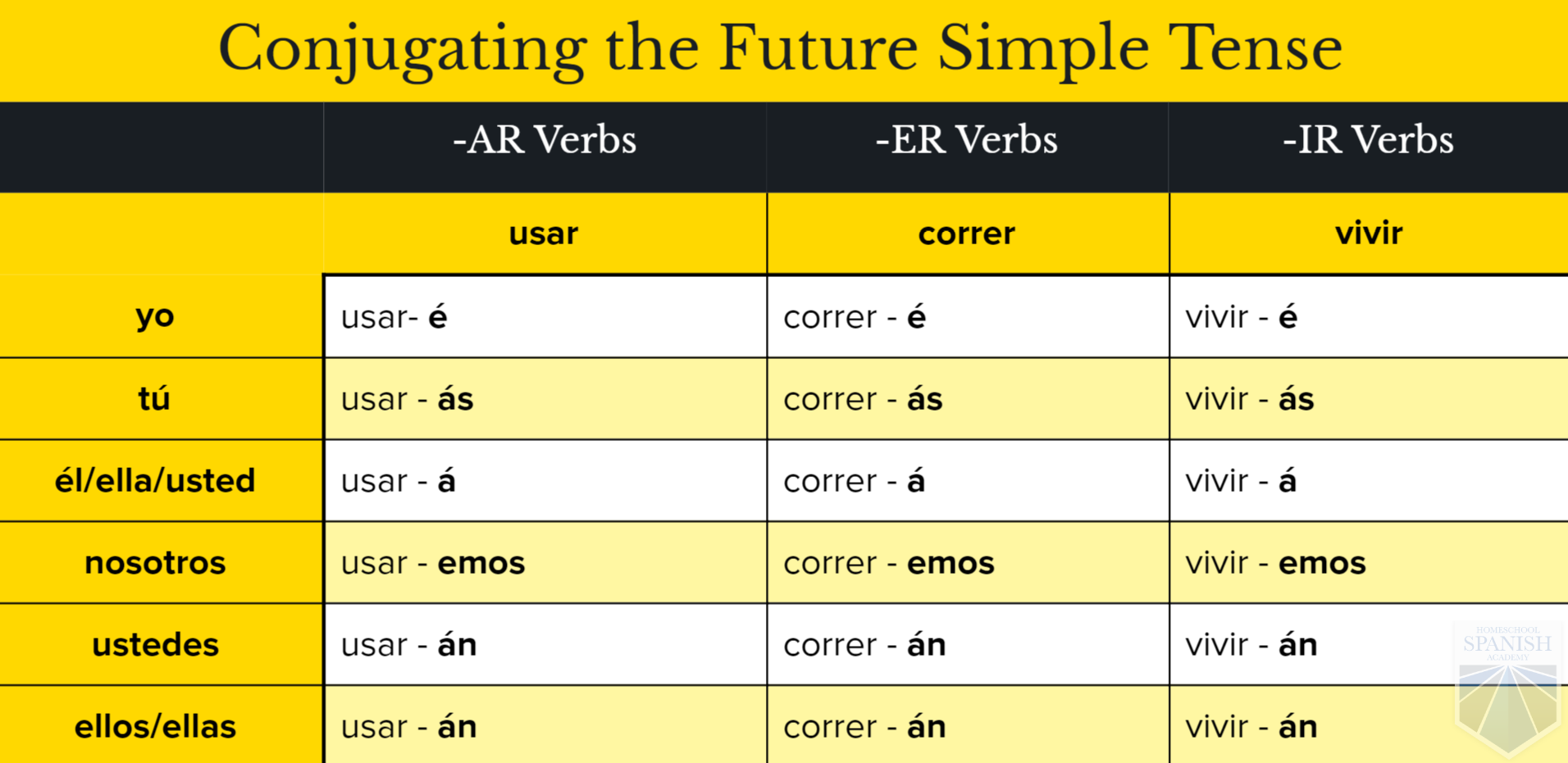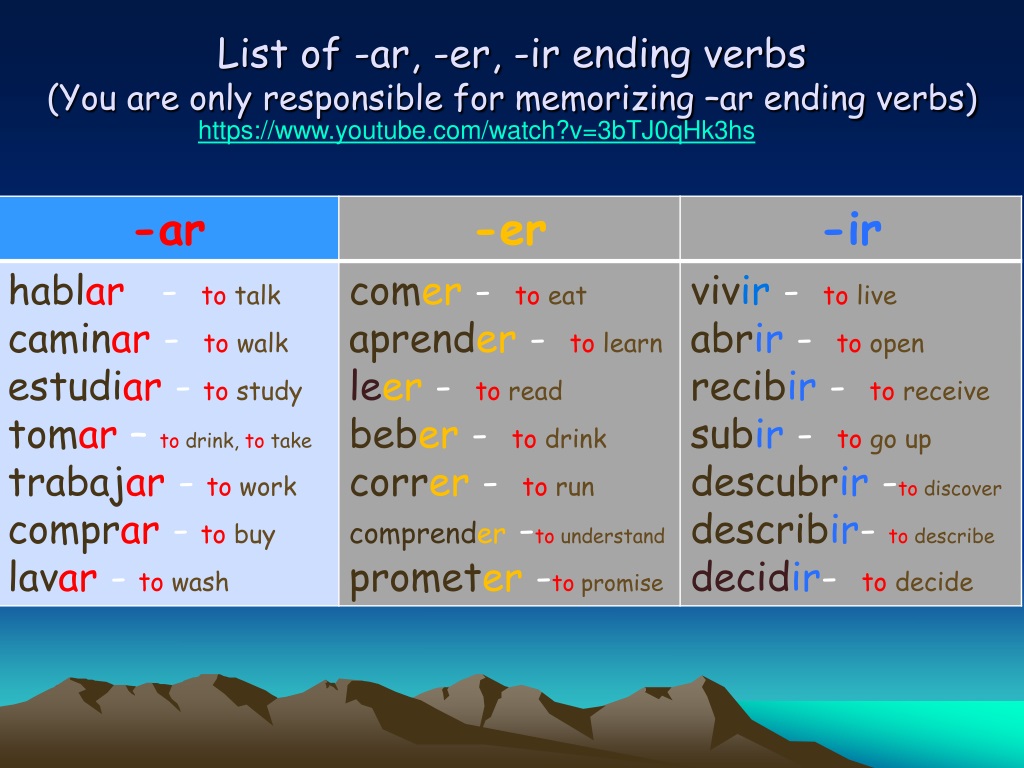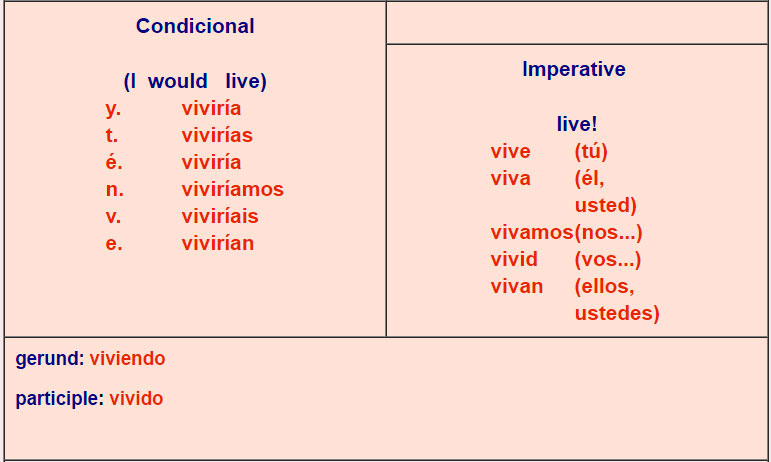

English still expresses these important distinctions, but often with a combination of verb tenses and extra auxiliary verbs.Īs we are focusing on the preterite in this guide, we will illustrate what a “completed” action means by contrasting it with an “ongoing” action. Spanish past tense forms allow speakers to use a convenient verb ending to express for how long an action occurred, whether it is habitual, or whether it was completed. However, English speakers should be careful not to overuse the preterite when other Spanish past tense forms would be more appropriate, such as the imperfect for ongoing actions. The preterite form of past tense should feel familiar to English speakers, as it is very similar to the English simple past tense (jump + -ed = jumped). Verb Preterite Stem Irregular Endings ser & ir fu- él fue, ellos fueron estar estuv- yo estuve, tu estuviste, él estuvo, nosotros estuvimos, vosotros estuvisteis, ellos estuvieron tener tuv- yo tuve, él tuvo poder pud- yo pude, él pudo hacer hic- (most subjects), hiz- (third person singular) yo hice, él hizo poner pus- yo puse, él puso decir dij- yo dije, él dijo ver vi- yo vi, él vio querer quis- yo quise, él quiso If you’re not familiar with these verbs, here are 50 common irregular preterite Spanish verbs to get you started.Īnother interesting phenomenon to note is that the ser and ir preterite conjugations are identical.


Irregular verb conjugations take some memorization.įortunately, many of the most common irregular preterite verbs follow patterns, consisting of a new stem and different endings for a few subjects. Irregular Preterite VerbsĪll regular verbs can be transformed into the preterite tense easily. See our guide on Spanish pronouns if you need to brush up on the subject pronouns found in the “Person” category above. Adding temporal expressions such as ayer (yesterday) helps speakers distinguish when something took place. Note that the nosotros form is the same as the present tense form. Person Verbs ending in -ar Verbs ending in -er and -ir yo -é -í tú -aste -iste él, ella, usted -ó -ió nosotros -amos -imos vosotros -asteis -isteis ellos, ellas, ustedes -aron -ieron To form the preterite in Spanish with regular verbs, remove the -ar, -ir, or -er and add the appropriate ending from the chart below. Spanish verbs come in three categories ( -ar, -ir, and - er) and change (“conjugate”) according to who performed it and when the action occurred. The preterite is used to describe actions which have been completed.

Changing the playback speed will NOT affect sound quality.The Spanish preterite tense is one of five forms used to describe actions or events that occurred in the past. Video too fast or too slow for you? Change the playback speed of the video quickly. We were all wanting to travel to the sea. The first and third person singular forms are identical, therefore the context must distinguish between the two. Ten + (ending) -> ten ía, ten ías, ten ía, ten íamos, ten íais, ten ían Let's review the verb tener (to have) as an example: The imperfect tense of regular -er and -ir verbs take place by substituting the "er" and "ir" ending by ía, ías, ía, íamos,íais, ían.


 0 kommentar(er)
0 kommentar(er)
